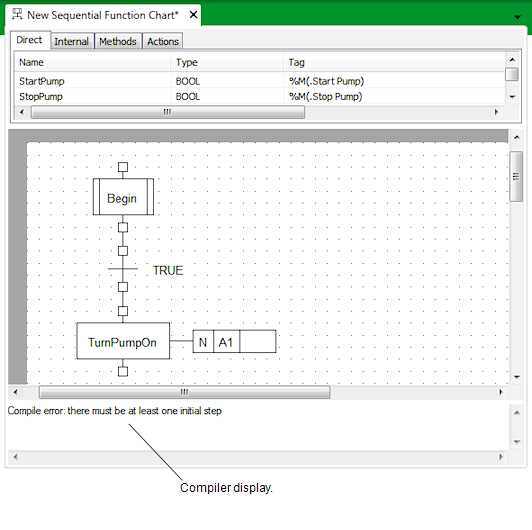The Build group on the Logic tab includes commands that you can use to compile your Sequential Function Chart (SFC). The compilation feature is useful as it checks that your Sequential Function Chart has the correct syntax.
There are two compile options:
- Compile—Compiles the chart. If the chart is invalid, the compiler display provides a diagnostic message with a brief explanation of the cause of the invalid syntax. If the syntax is correct, the compiler displays a success message.
- Compile with Diagnostics—Compiles the SFC and provides detailed diagnostic information. As with the Compile option, the compiler displays diagnostic messages for invalid syntax. If the syntax is correct, the compiler displays a success message.
To compile a Sequential Function Chart:
- Display the Sequential Function Chart in Design mode (see Display a Logic Program in Design Mode).
- Select the Logic tab on the ViewX ribbon.
- Select the Compile command or Compile with Diagnosticscommand in the Build group.
The Sequential Function Chart is compiled and the compile messages are shown in the Compiler display.If the chart has invalid syntax, you will need to alter the SFC. Typically, the causes of the invalid sysntax are minor, such as the wrong type of value being specified or a missing connection.

ATTENTION: If a database item's name includes parentheses ( ), you should ensure that each opening parenthesis is paired with a closing parenthesis. If this is not the case, any Logic programs that reference the database item will not compile successfully. For example, a point named "Analog Point (4" or "Analog Point (4))" will generate a compile error message. Multiple sets of parentheses will compile successfully, including nested parentheses. For example, a Logic program can refer to a point named "Analog Point (4)" or "Analog Point (4(x))". For more information, see Limitation for Database Item Names Referenced in Logic Programs in the ClearSCADA Guide to Logic.